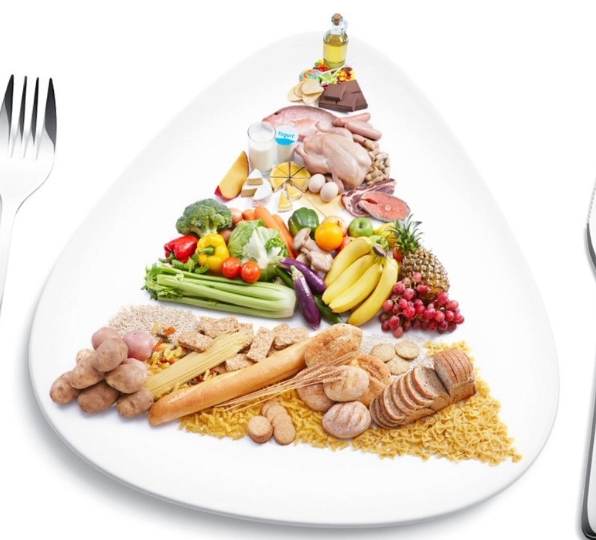Introduction:
Making wise food choices is crucial for our general health and wellbeing in the modern world where there are a plethora of food options available to us. Nutritional labels are an invaluable resource in this regard, offering important details regarding the ingredients of food items. People who know how to read these labels are better equipped to navigate the confusing maze of grocery store aisles and make informed, health-conscious decisions. We’ll go over the main elements of nutritional labels in this guide, along with some tips on how to use the data to choose wholesome foods.
1. Serving Size and Servings per Container
The foundation of understanding nutritional labels lies in grasping the concept of serving size. This represents the standard portion of the food typically consumed at one time. It’s important to be mindful of the serving size as all the nutritional information on the label is based on this quantity. Additionally, check the number of servings per container to understand the total quantity in the package.
2. Calories
Caloric content is a crucial aspect of nutritional labels. It indicates the amount of energy provided by one serving of the food. Knowing the calorie count is essential for managing weight and making balanced food choices. Consider your daily caloric needs and adjust portion sizes accordingly.
3.Macronutrients
Protein: Listed in grams, protein is a necessary building component for the body. Make sure you are receiving enough for your particular needs and way of life.
Carbohydrates: Dietary fiber and sugars are among the various forms of carbohydrates that are broken down in this section. For better nutritional value, choose foods low in added sugars and high in fiber.
Fats: Saturated and trans fats are broken down along with the overall fat content. For heart health, choose foods high in monounsaturated and polyunsaturated fats and low in saturated and trans fats.
4.Dietary Fiber
Dietary fiber is crucial for digestive health and can contribute to a feeling of fullness. Seek out foods that are rich in dietary fiber, such as whole grains, fruits, vegetables, and legumes.
5.Vitamins and Minerals
Nutritional labels often include the percentage of daily recommended values for various vitamins and minerals. Pay attention to key nutrients like Vitamin D, calcium, iron, and potassium. Ensure that the food contributes positively to your daily nutrient requirements.
6. Percent Daily Values (%DV)
The %DV provides insight into how much a nutrient in a serving of food contributes to a daily diet. It is based on a daily intake of 2,000 calories, serving as a general reference calorie intake. Use %DV to quickly assess whether a serving of food is high or low in a particular nutrient. A %DV of 5% or less is considered low, while 20% or more is considered high.
7. Additional Nutritional Considerations
Added Sugars: A dedicated line for added sugars is now included on nutritional labels. Reducing added sugar consumption is essential for general health since too much of it is associated with a number of health problems. Select low-added-sugar foods and emphasize naturally occurring sugars found in fruits and dairy products.
Information on Allergens: Nutritional labels also list common allergens that may be present in the product. To prevent possible health risks, closely look for allergen warnings if you have food allergies or sensitivities.
8. Decoding Ingredients
Ingredient List: The product’s ingredient list provides important information about its makeup. The main ingredient is listed first and the other ingredients are listed in descending order of weight. Products with lengthy lists of preservatives, additives, or foreign terms should be avoided.
Finding Whole Foods: Select meals with easily identifiable and basic ingredients. Minimally processed whole foods are usually healthier options and contain more essential nutrients. Seek for items that you would use in your own home cooking.
9. Special Considerations for Certain Diets
Labels that read “gluten-free,” “organic,” or “non-GMO” can help people with particular dietary requirements or preferences make better food choices. Comprehending these labels enables people to match their food choices to their dietary needs.
10.Tips for Smart Food Choices
Comparing Products: To help you make better decisions when you shop, compare comparable products. Take into account elements such as ingredient quality, nutrient composition, and calorie content. Choose the option that best suits your dietary objectives.
Marketing Claims to Avoid: Be wary of claims made in the marketing, such as “low-fat,” “sugar-free,” or “all-natural.” These terms might not accurately describe the product’s overall nutritional value. For a thorough understanding, always refer to the ingredient list and nutritional label.
Portion control is crucial, even when selecting foods that are high in nutrients. Be mindful of portion sizes and refrain from overindulging. This is particularly important for foods high in calories.
Seeking Professional Advice: Speaking with a registered dietitian or nutritionist is a smart move for people who have particular health concerns or dietary objectives. They can offer tailored guidance based on.


Conclusion:
Nutritional labels are valuable tools that empower consumers to make informed and health-conscious food choices. By understanding the key components of these labels, individuals can unlock the nutritional value of the foods they consume. Whether you’re managing specific dietary requirements, striving for weight management, or simply aiming for a balanced and wholesome diet, this guide equips you with the knowledge to navigate the aisles of the grocery store with confidence. Make it a habit to read and understand nutritional labels, and let this knowledge be your guide to a healthier and more informed lifestyle. Remember, the choices you make in the grocery store have a lasting impact on your overall well-being.












